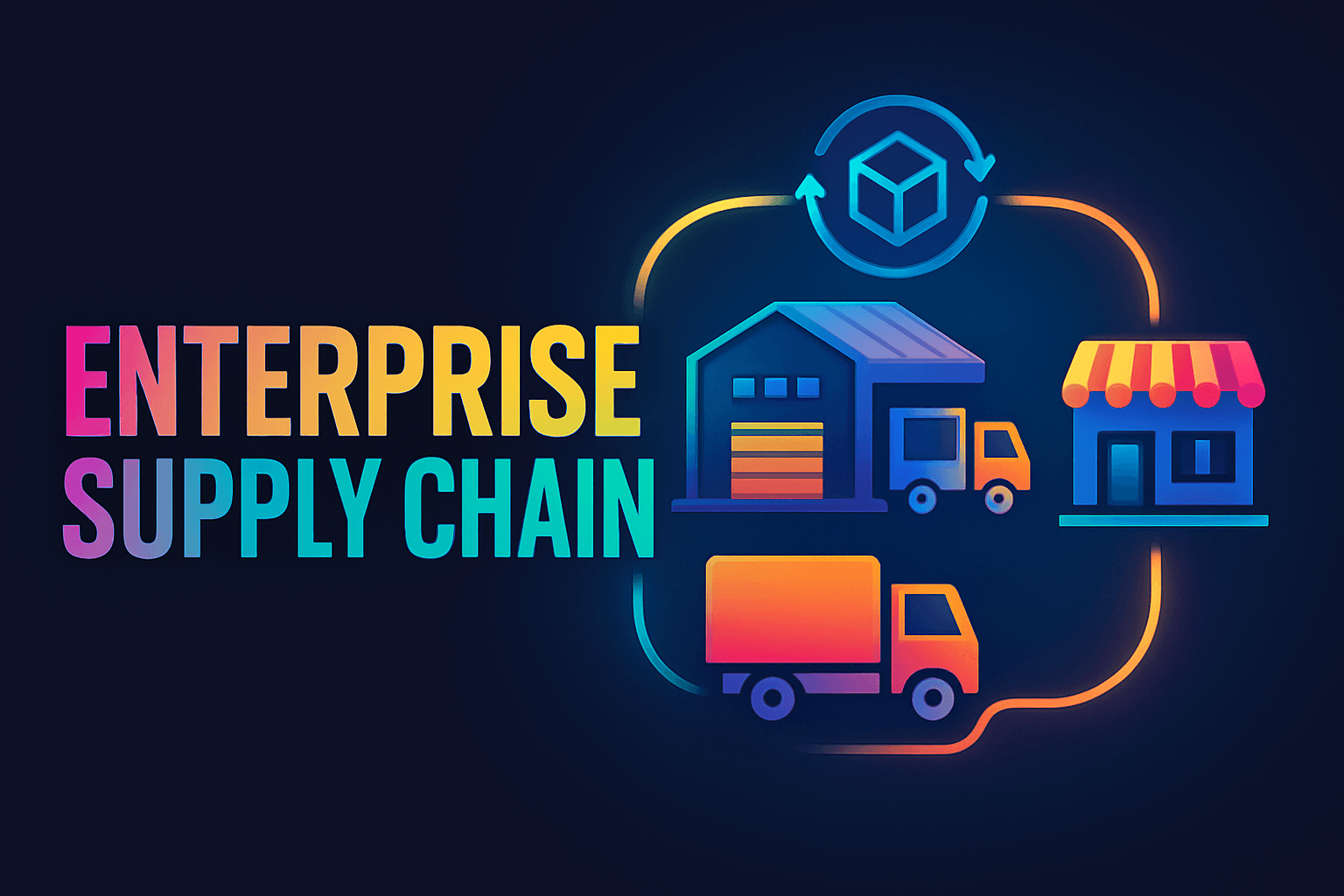Enterprise Supply Chain: A Guide for M&E Executives

Introduction
The term “enterprise supply chain” typically conjures images of factories, logistics, and physical goods. For an M&E executive, however, this concept is both more abstract and more critical to their business.
In the Media & Entertainment industry, the supply chain is the intricate, invisible network of companies, projects, and people that moves intellectual property—from the initial script to the final viewer’s screen. With the global M&E market projected to reach $3.5 trillion by 2029 (PwC, 2025), the stakes of managing this complex ecosystem have never been higher.
My analysis shows that the most successful firms are moving beyond a fragmented, manual approach to embrace a data-driven strategy that provides total visibility into their digital supply chain.
Table of content
- The Unique Challenges of the M&E Enterprise Supply Chain
- The New Imperative: Moving from Fragmentation to Holistic Visibility
- A Strategic Framework for Mastering Your Digital Supply Chain
- How Vitrina Transforms Your Enterprise Supply Chain Strategy
- Conclusion: A Strategic Approach to Mastering the Enterprise Supply Chain
- Frequently Asked Questions
Key Takeaways
| Core Challenge | The M&E enterprise supply chain is highly fragmented, with data scattered across silos, making it nearly impossible to gain full visibility and de-risk deals. |
| Strategic Solution | A data-driven strategy allows executives to map and manage the entire supply chain, identifying key partners, vetting their track records, and streamlining deal flow. |
| Executive Insight | Success in the M&E supply chain is contingent on a shift from managing individual relationships to using intelligence to gain a holistic view of the entire ecosystem. |
The Unique Challenges of the M&E Enterprise Supply Chain
Unlike a traditional physical supply chain, which is often linear and well-defined, the M&E “enterprise supply chain” is a dynamic, complex web. It connects a vast ecosystem of content creators, production houses, specialized vendors (e.g., VFX, localization), distributors, and financiers. While a general enterprise may worry about inventory and logistics, an M&E executive must contend with a different set of pain points, including:
- Extreme Fragmentation: The industry is highly specialized and fragmented, with hundreds of thousands of small-to-medium-sized companies and freelancers. The lack of a centralized, unified database makes it a monumental task to identify, vet, and connect with the right partners on a global scale (Vitrina, 2023).
- Data Silos and Incomplete Information: Critical data about projects, companies, and deals is siloed across various spreadsheets, personal contacts, and disparate industry sources. As a result, executives often lack a complete, end-to-end view of the supply chain, making it difficult to find new business opportunities, assess risk, or track a project’s full journey (Infosys, 2024).
- Lack of Visibility: It is nearly impossible to gain a holistic view of the industry without a robust system. Executives cannot easily track a project from its initial development to its final release, or see the full history of a company’s past collaborations, which is vital for making informed business decisions.
This fragmentation of data is where the traditional approach fails. Relying on manual research, personal networks, or outdated spreadsheets leaves executives exposed to significant risks, including missed opportunities and poor partner selection. To succeed in this competitive landscape, a new approach is necessary—one that provides a unified, real-time view of the entire M&E supply chain.
The New Imperative: Moving from Fragmentation to Holistic Visibility
In my analysis, the future of the M&E “enterprise supply chain” is an intelligent, connected ecosystem. This new paradigm requires a shift from a reactive, manual approach to a proactive, data-driven one. It involves three key steps:
- Supply Chain Mapping: The first step is to map the entire supply chain, not just your known partners. This means identifying every company, executive, and project that could be relevant to your business, from a small VFX studio in France to a major sales agent in Los Angeles. This provides a clear, comprehensive view of the landscape.
- Continuous Vetting: Once you have mapped the landscape, you need a system to continuously vet and qualify partners. This goes beyond a simple web search; it requires a deep dive into a company’s verified project history, their past collaborations, and their key decision-makers.
- Pipeline Automation: The final step is to automate your business development pipeline. By integrating real-time market intelligence into your workflow, you can move from a resource-intensive, manual process to a streamlined, automated one. This allows your team to focus on deal-making, not data collection.
This integrated approach is what truly transforms an M&E business. It is the difference between a team that is constantly reacting to market shifts and one that is proactively shaping its future by making smarter, faster, and more confident decisions.
A Strategic Framework for Mastering Your Digital Supply Chain
For an M&E executive, mastering the “enterprise supply chain” requires a strategic framework that prioritizes actionable intelligence. I recommend the following steps to build a more resilient and efficient supply chain:
- Identify & Profile Key Companies: Instead of starting with a generic list of companies, begin by profiling the most relevant players in your niche. Use a platform that provides a complete profile of a company’s deal history, client list, and key executives.
- Track Project Lifecycle: The M&E supply chain is defined by its projects. Implement a system that allows you to track a project from its earliest stages of development to its final release. This provides a powerful “early warning” signal for new opportunities.
- Analyze Relationships & Networks: The most valuable insight is understanding who works with whom. By analyzing collaboration patterns and deal history, you can identify trusted partners and mitigate the risk of entering an unvetted relationship.
How Vitrina Transforms Your Enterprise Supply Chain Strategy
Vitrina is a system built specifically to address the core challenges of the M&E “enterprise supply chain.” It is a native, intelligence-driven platform designed to serve as a single source of truth for business development and deal-making. For a senior executive, Vitrina’s core capabilities are a game-changer:
- Comprehensive Company & Executive Profiling: Our database profiles over 350,000 companies and 3 million individuals. You can search for studios, distributors, and vendors by their verified credits, past projects, and their specific roles. This allows for unparalleled precision in finding the perfect partner for any deal.
- Global Project Tracking: Our Film+TV Projects Tracker provides real-time alerts on what companies are acquiring, producing, and releasing. This intelligence allows you to identify trends and find new opportunities long before they become public knowledge.
- API & CRM Integration: Vitrina is designed to enrich your existing workflow. You can integrate our deep, industry-specific intelligence directly into your current CRM (e.g., HubSpot, Salesforce), turning a standard contact list into a powerful, data-driven sales pipeline.
By providing a unified view of the market, Vitrina allows executives to move from a reactive, scattershot approach to a proactive, strategic one.
It eliminates the fragmentation of data, reduces the time spent on manual research, and empowers teams to make faster, more confident decisions. The result is a more efficient, intelligent, and scalable business development pipeline.
Conclusion: A Strategic Approach to Mastering the Enterprise Supply Chain
The media and entertainment industry will continue to evolve at an unprecedented pace. The need for a data-driven approach to the enterprise supply chain is no longer a strategic option—it’s a critical imperative.
A tactical, disconnected solution will not suffice in an industry where the value is in the interconnected web of projects, companies, and people. My analysis shows that the most successful executives are those who invest in specialized intelligence platforms that provide a unified, global view of the market.
They are moving beyond simple spreadsheets to embrace a data-driven approach that future-proofs their business. The time to consolidate your data and streamline your deal flow is now.Sign-up Today
Frequently Asked Questions
A traditional supply chain focuses on the movement of physical goods. An M&E supply chain is a more complex, digital ecosystem that manages the flow of intellectual property and digital assets, from a project’s inception to its final delivery to a consumer.
The M&E supply chain includes a network of content creators, production houses, specialized vendors (e.g., VFX, post-production), distributors, financiers, broadcasters, and streaming platforms. It is a highly interconnected web of companies and individuals.
Visibility is challenging due to the extreme fragmentation of the industry. Data about projects, companies, and deals is scattered across numerous platforms, personal networks, and disparate databases, creating data silos that prevent a holistic view.
Specialized technology can provide a single source of truth for the entire supply chain. By using a platform that tracks projects, companies, and executives in real-time, executives can automate manual research, find new business opportunities, and de-risk deal-making.

























